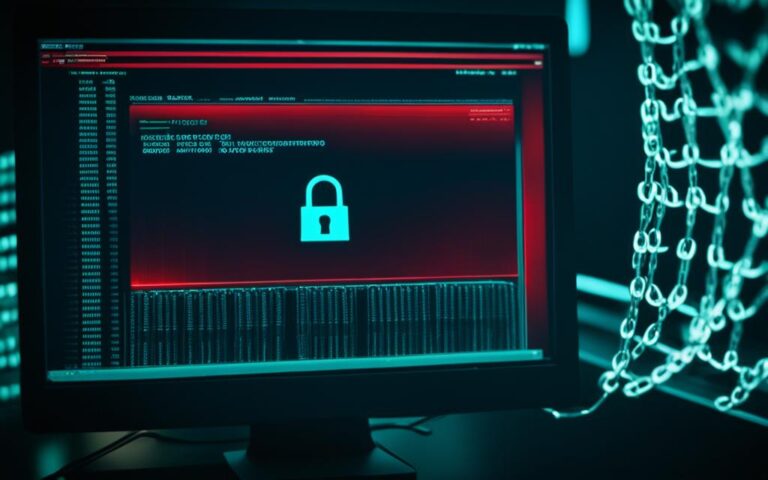Ransomware Eradication: Preparing for the Worst
In today’s digital landscape, ransomware attacks have become a prevalent threat, targeting organizations of all sizes and industries. To combat this ever-evolving menace, it is crucial for businesses to prioritize ransomware preparedness measures through the implementation of a comprehensive cybersecurity framework.
By adopting a robust cybersecurity framework, organizations can establish a solid foundation for protecting their sensitive data and mitigating the risks associated with ransomware attacks. These frameworks, such as the Microsoft Cloud Security Benchmark (MCSB), provide invaluable guidance on configuring cloud environments like Azure and implementing effective security controls.
One key aspect of ransomware preparedness is prioritization. Organizations should allocate resources strategically, focusing on preparation, limitation, and prevention. By assuming breach and preparing for worst-case scenarios, businesses can proactively protect their systems and data.
Prevention plays a pivotal role in the fight against ransomware. To make it harder for attackers to gain unauthorized access, organizations should strengthen their security controls and consistently enhance security hygiene practices. Limiting the scope of damage is also critical, and robust controls for privileged accounts are a must.
In conclusion, ransomware eradication requires a proactive and comprehensive approach. By adopting a cybersecurity framework, prioritizing measures, and implementing robust prevention strategies, organizations can enhance their ransomware preparedness and safeguard their critical assets.
Understanding the Ransomware Landscape
Ransomware attacks have witnessed a significant surge in recent years, affecting approximately 37% of global organizations. This alarming statistic highlights the need for a deeper understanding of the ransomware landscape and proactive measures to combat this growing threat.
Ransomware Statistics: The rise in ransomware attacks is a pressing concern for global organizations. These attacks target businesses of all sizes and industries, infiltrating their systems and encrypting essential data. With almost two-fifths of organizations falling victim to ransomware, it is imperative to stay vigilant and prepared.
Ransomware Strains: The ransomware landscape is ever-evolving, with new strains constantly appearing. Notable ransomware strains that have caused widespread damage include GandCrab, CryptoLocker, Locky, Petya, Ryuk, WannaCry, and GandCrab (as two separate strains with the same name). These strains employ various techniques, such as exploiting vulnerabilities, distributing phishing emails, or launching supply chain attacks, in order to gain access to systems.
To visualize the impact of ransomware attacks, let’s take a closer look at some notable strains:
| Ransomware Strain | Year of Emergence | Characteristics |
|---|---|---|
| GandCrab | 2018 | Highly sophisticated strain known for using strong encryption algorithms and demanding ransom payments in cryptocurrencies. |
| CryptoLocker | 2013 | One of the first prominent ransomware strains, distributed through malicious email attachments, often demanding payment in Bitcoin. |
| Locky | 2016 | Spread through macros in Microsoft Office documents, Locky quickly gained notoriety for its large-scale distribution. |
| Petya | 2016 | Known for its ability to spread laterally within a network, Petya leverages vulnerabilities to encrypt system files and demand a ransom. |
| Ryuk | 2018 | A strain primarily targeting organizations, Ryuk demands high ransom payments and is often delivered through phishing campaigns. |
| WannaCry | 2017 | Infamous for its global impact, WannaCry propagated through a Windows exploit and wreaked havoc on systems worldwide. |
These strains serve as stark reminders of the various techniques employed by cybercriminals to unleash ransomware attacks. Organizations must remain up-to-date with the latest ransomware trends and implement proactive measures to mitigate the risks effectively.
Taking Proactive Measures: To combat the evolving ransomware landscape, organizations should prioritize comprehensive security measures. This entails regular vulnerability assessments, robust email security protocols, employee awareness training, and leveraging security solutions to detect and defend against potential ransomware attacks.
By gaining a thorough understanding of the ransomware landscape and implementing preventive measures, organizations can fortify their defenses and reduce the risk of falling victim to these malicious attacks.
Assessing Ransomware Resilience
Assessing ransomware resilience involves understanding the network from an attacker’s perspective, having a robust incident response plan, and evaluating the effectiveness of existing controls. To establish a strong defense against ransomware attacks, organizations should focus on the following key areas:
- Network Assessment: Conducting a comprehensive network assessment allows organizations to identify potential vulnerabilities and areas of weakness that attackers may exploit. By taking a proactive approach to network security, organizations can implement necessary measures to strengthen their defenses and prevent ransomware attacks.
- Incident Response Plan: A well-defined and tested incident response plan is crucial for effectively handling ransomware attacks. This plan should outline the steps to be taken in the event of an attack, including communication protocols, containment measures, and data recovery processes. Regularly reviewing and updating the incident response plan ensures its relevance and effectiveness.
- Controls Assessment: Evaluating the people, processes, and technology in place to mitigate ransomware risks helps identify gaps that need to be addressed. Organizations should assess controls across various domains, including prevention, detection, and response, to ensure comprehensive protection against ransomware attacks. This includes implementing strong access controls, regular patching and updates, and robust backup and recovery procedures.
By focusing on these areas, organizations can enhance their ransomware resilience and minimize the impact of potential attacks.
Having a clear understanding of the network, a robust incident response plan, and effective controls assessment are key components of a comprehensive ransomware resilience strategy.
Strengthening Ransomware Defenses
When it comes to protecting your organization from ransomware attacks, there are key areas that require attention. By focusing on your minimum viable company (MVC) and prioritizing cyber security controls, you can bolster your defenses against these malicious threats.
Understanding the critical applications and data that are essential for your organization’s operations is crucial. This knowledge allows you to develop targeted defense strategies that prioritize the protection of your most valuable assets. By identifying these crucial components, you can allocate your resources effectively, ensuring that the most effective cyber security controls are in place.
It is vital to prioritize cyber security controls based on their cost-benefit returns. Not all controls are equal, and investing in the right ones can significantly enhance your organization’s resilience to ransomware attacks. Conduct a thorough assessment of your existing controls and prioritize those that provide the greatest security impact.
To minimize the impact of ransomware attacks, it is essential to have effective recovery methods in place. This includes having robust data backup systems and replica systems that can restore operations swiftly. A solid recovery plan ensures that even in the event of a successful attack, your organization can recover quickly and minimize the downtime and financial losses associated with ransomware incidents.
“By focusing on their minimum viable company and prioritizing cyber security controls, organizations can improve their resilience against ransomware attacks.”
By addressing these key aspects of ransomware defense, organizations can significantly enhance their overall resilience and reduce the risk of compromise. It is crucial to implement these strategies as part of a comprehensive cyber security framework that accounts for prevention, detection, and response measures.
Remember, staying proactive and continuously evaluating your defenses are essential to stay one step ahead of evolving ransomware threats.
Enhancing Ransomware Defenses: Prioritization and Cyber Security Controls
When it comes to strengthening ransomware defenses, prioritization and the implementation of robust cyber security controls are paramount. By aligning your resources with the areas that provide the most significant impact and implementing effective controls, you can significantly enhance your organization’s resilience. The table below outlines key considerations for strengthening your ransomware defenses:
| Key Consideration | Description |
|---|---|
| Minimum Viable Company (MVC) | Identify critical applications and data essential for operations |
| Prioritize Cyber Security Controls | Allocate resources to controls with the highest cost-benefit returns |
| Recovery Methods | Implement effective data backup and replica systems |
By addressing these considerations, organizations can enhance their ransomware resilience, minimize the impact of attacks, and ensure business continuity in the face of evolving cyber threats.
Conclusion
Ransomware attacks pose an ongoing and ever-changing threat to organizations worldwide. To effectively combat this menace, organizations must prioritize ransomware eradication, data protection, and cyber security readiness. By adopting a robust cybersecurity framework, organizations can establish a solid foundation for mitigating ransomware risks and enhancing their overall security posture.
Understanding the intricacies of the ransomware landscape is a critical component of proactive defense. Conducting comprehensive network assessments and staying informed about emerging ransomware strains help organizations stay one step ahead of cybercriminals. Additionally, developing a well-defined incident response plan ensures swift and coordinated action during a ransomware attack, minimizing the potential damage.
Moreover, organizations must strengthen their security controls, placing particular emphasis on their minimum viable company (MVC). By identifying and safeguarding critical applications and data, organizations can prioritize their cyber security efforts effectively. It is essential to invest in adequate recovery methods, such as robust data backups and replica systems, to ensure business continuity in the face of a ransomware attack.
In conclusion, a proactive approach is vital for ransomware eradication, data protection, and cyber security readiness. By adopting the right cybersecurity framework, staying updated on the evolving ransomware landscape, conducting regular network assessments, and fortifying security controls, organizations can heighten their resilience against ransomware attacks. With a strong focus on protection and preparedness, organizations can defend against this ever-present threat and safeguard their valuable assets.












